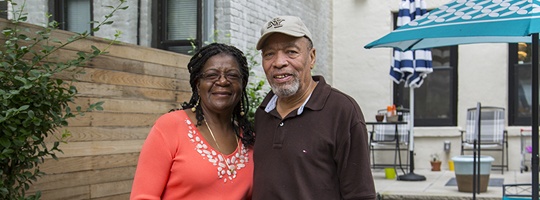Dixon Projects takes a painstaking approach when restoring New York City's revered brownstone residences to their former glory.
Few things conjure up images of quintessential New York City like its ubiquitous and highly prized brownstone row houses. Lining the streets with uniform facades in chocolate and russet hues, these stately homes are the esteemed centerpieces of many of our area's protected historic streets, especially in Brooklyn, Manhattan and Jersey City.
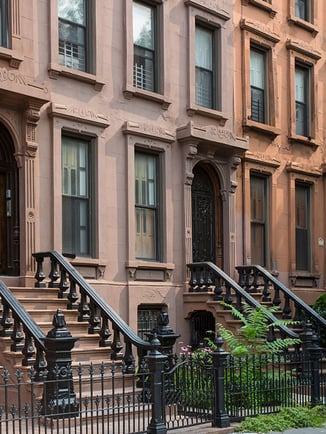
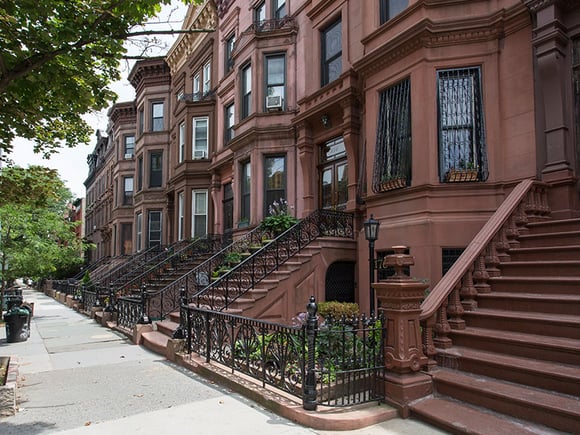
As a façade material, brownstone — a type of sandstone — came to prominence during the city's 19th century building boom. Far cheaper than limestone or granite, brownstone was quarried at a rapid pace from neighboring New Jersey and Connecticut as developers rushed to meet New York City's exploding population.
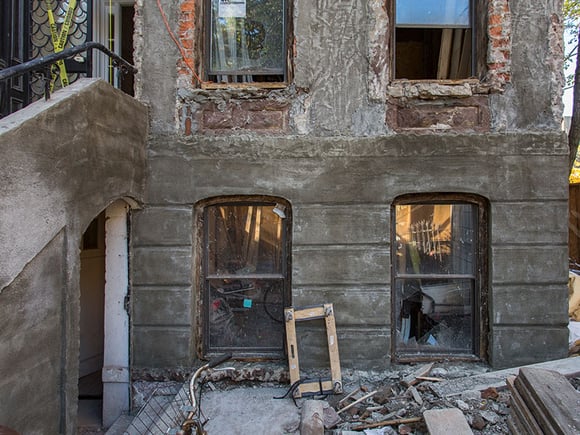
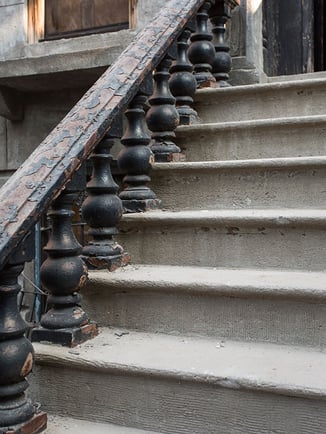
Although the price may have been right for builders, brownstone proved to be a less-than desirable façade material over the long haul. As demand taxed supply, much poorer quality brownstone was pressed into service for architectural use. Brownstone is also a sedimentary rock, built up in horizontal layers over time. Combined with the stone's porosity, this composition makes the material susceptible to peeling when installed with the layers running vertically. In fact, that peeled-paint look you've likely noticed in rundown brownstone façades is not paint at all, but the actual layers of stone giving way.
Properly repairing and restoring brownstone is a time-consuming and expensive specialty, so cheap stucco patches or a layer of paint became the slap-dash solution of choice for building owners without much reverence to appearance or historic value. As demand for fine brownstone residences skyrockets and historic landmark protections grow, meticulous and careful façade restorations have, thankfully, become more prevalent.
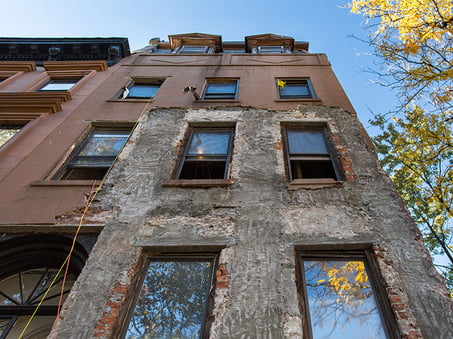
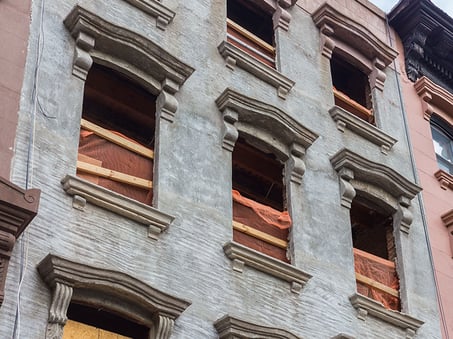
The first step in a by-the-book brownstone renovation involves completely removing the damaged outer layers of stone. As Patrick Sullivan, an executive director at Dixon Projects explains, "The restoration team uses handheld jackhammers to chip the brownstone down to a suitable substrate, which means they're taking off all of the brownstone that’s peeling or eroded. They get down about an inch-and-a-half into the three-inch slabs. That's where you find the part that's strong and hasn't been affected by water."
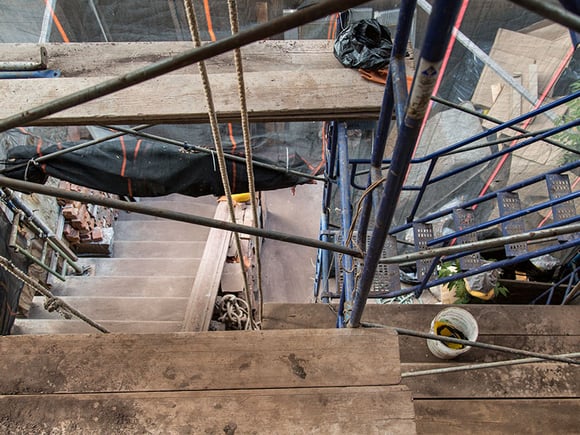
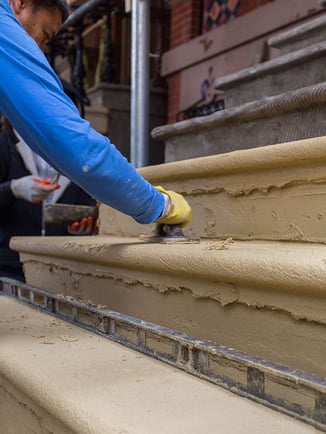
Next, continuous coats of a cement product are applied over the entire façade surface. This product, otherwise known as a scratch coat, is applied in several layers to build up the stone that was chipped away. Although the scratch coat is deliberately left rough and haphazard-looking, its application is one of the most important parts of a proper brownstone restoration. And patience is key. "If you don't allow each layer of the scratch coat to completely harden, the cement's efflorescence will bleed through the top brownstone layer," explains Dixon Projects Director of Private Client Services Christian Grapel. "It looks like a white discoloration, and you hate to see it, because at that point, there's nothing you can do about it."
After the scratch coat layers have dried, the cementitious product is combined with brownstone, pigment and mica. "When you look at a newly refinished brownstone, you'll see it glistening in the sun," Sullivan explains. "That's the mica in the mixture catching the light and reflecting it, which would've been a feature of the original quarried brownstone as well."
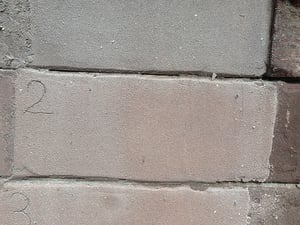
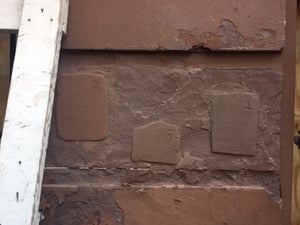
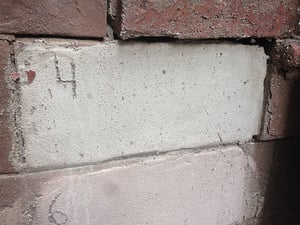
At this stage, for homes within the five boroughs, approval from the Landmarks Preservation Commission is required. Three or more color samples are applied to the renovated building, and an LPC preservationist must select and approve one of the samples before the final layers can be applied to the home.
At a situation like this, Dixon's longstanding expertise in working with the LPC becomes critical to the entire construction process. "Dealing with Landmarks requires experience and a delicate human touch," Project Manager Brendan Wilton explains. "You're ready to begin the final stages of the façade with your full crew, and that often dictates a lot of the interior work as well. If you don't have your masonry openings sorted out, you can't put new windows in, and so on. In order to stay on schedule, you have to prepare the right color samples and work in close collaboration with the LPC."
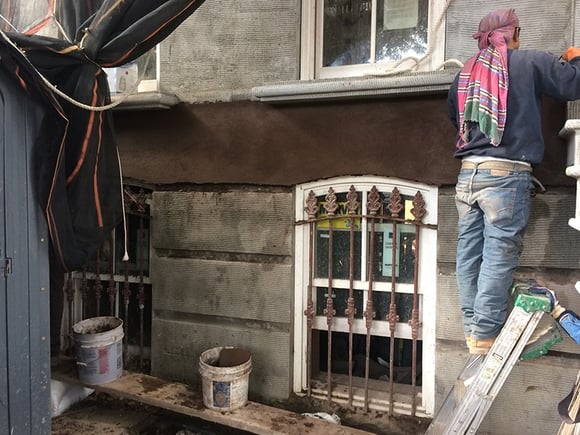
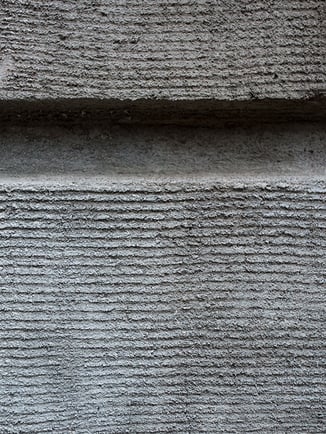
Once the color is approved, the brownstone mixture is applied to the whole house in successively finer and finer layers, ending with a smooth finish coat. Throughout this stage, lines are keyed into the layers where the original blocks were placed to give the appearance of slabs.
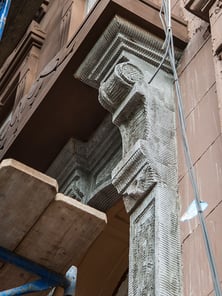
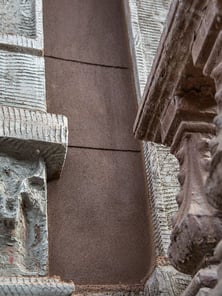
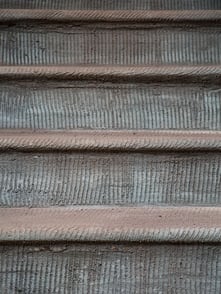
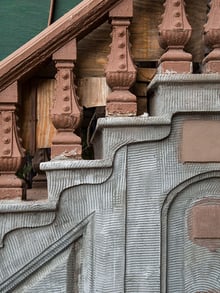
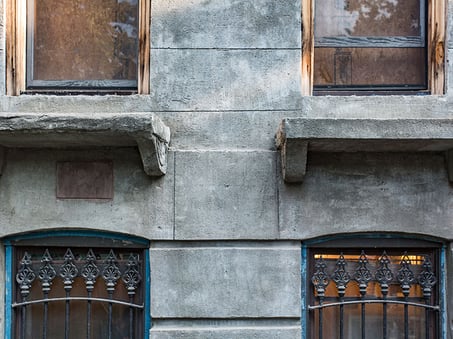
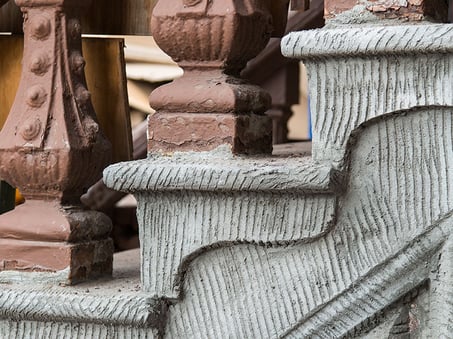
Ornamental details like corbels, lintels and sills require special care throughout the restoration process. During the scratch coat application, stainless steel pins are driven into the substrate to support the weight of these decorations. In the final stretches of the restoration, the ornaments and details are carefully resculpted. Brownstone artisans use historic tax photos or neighboring buildings as a reference, but much of this artistry is aided by the expertise of the specialists themselves." All the detail is hand done, usually by one person on the brownstone crew. They're just fantastic at what they do," Grapel points out.
A consistent temperature above 35 to 40 degrees Fahrenheit is necessary in order to allow each layer during the restoration process to cure properly, meaning brownstone façade repairs must be timed within a tight window from the end of spring through fall each year. Today, construction crews that specialize in brownstone restoration are highly sought-after tradespeople, often of Bangladeshi origin. In 2013, The New York Times profiled the growing specialty, noting that immigrants from Bangladesh have established an esteemed reputation in the field, often learning the trade from friends and relatives who have arrived before them.
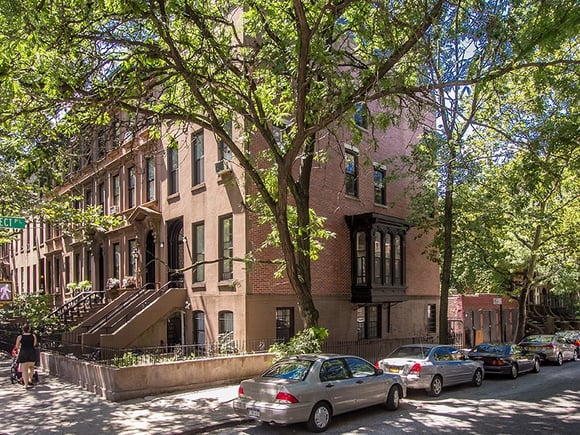
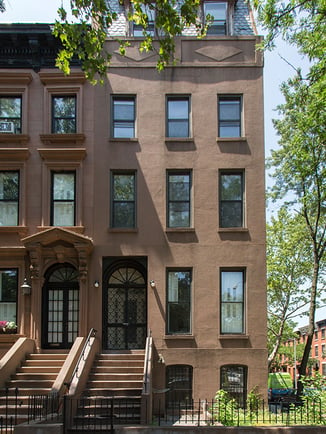
In all their renovation work, Dixon Projects is devoted to taking great care in historically accurate restorations whenever possible, even when historic districting doesn't require them to do so. Case in point: 98 Sixth Avenue in Park Slope. This large, corner residence was built in the Italianate style with attractive Second Empire design elements, but over time, much of the home's period details, including window sills and lintels, had been stripped away. Therefore, the façade renovation here was initiated not only to repair weathered brownstone, but to restore the home to its rightful architectural grandeur.
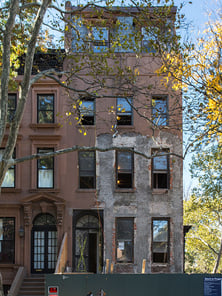
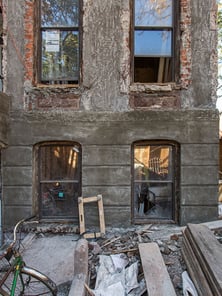
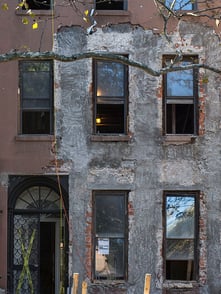
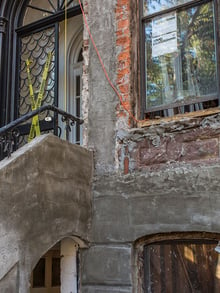
"It's one of the bigger brownstone jobs we've done, and it had really nice ornamental details," explains Sullivan. "So even though it wasn't landmarked when we began, it's still a historic property, and we felt it was the right character for the renovation."
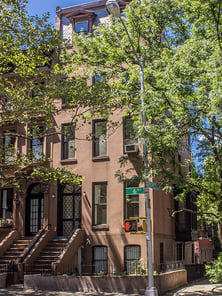
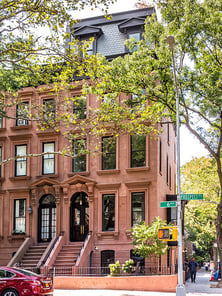
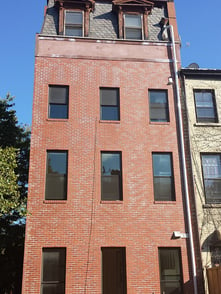
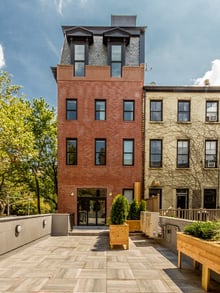
Now part of the Park Slope Historic District Extension II created in April 2016, the home is a shining example of a historically accurate, beautifully executed brownstone restoration that seamlessly blends with its neighboring row houses.
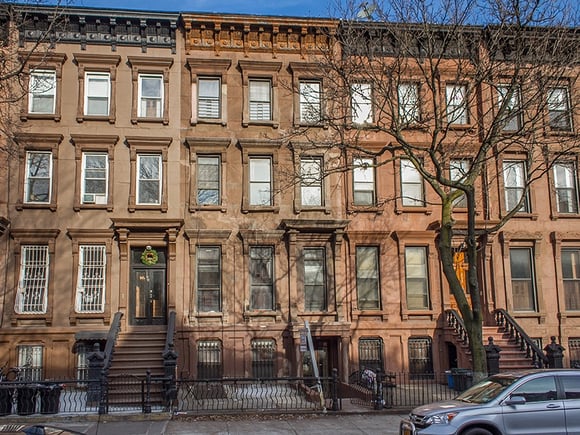
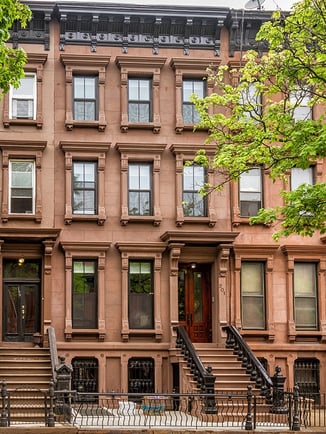
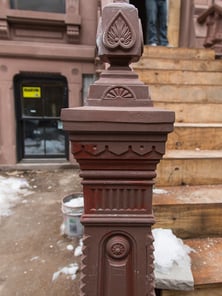
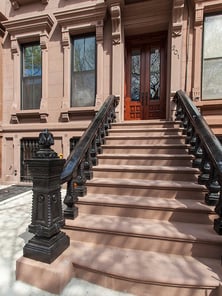
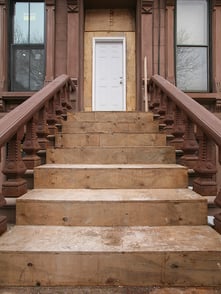
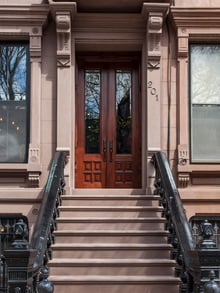
Today, at 201 Hancock Street, you'll find a lovely Neo-Grec brownstone with a stately high stoop and striking façade embellishments, including a bold, carved entry enframement and distinctive window surrounds. When Dixon acquired the home, however, much of the brownstone detailing was worn away and the stoop had been removed entirely. This was another Brooklyn brownstone scheduled for historic districting, but not yet designated. "We didn't have to comply with any Landmarks regulations," Grapel points out. "We didn’t have to add the historic front stoop and the metal handrails back to the front façade, but we did, because the home and its sister buildings in the row deserved it."
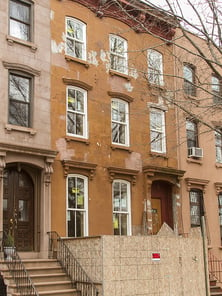
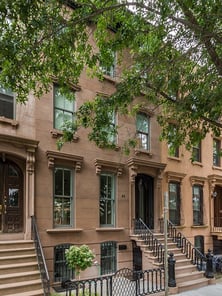
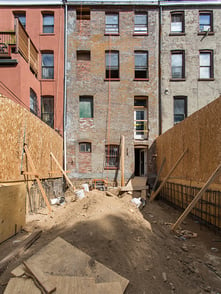
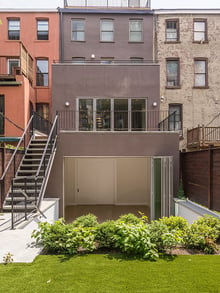
The Italianate brownstone at 48 Downing Street in Clinton Hill was also in a sorry state at the time of acquisition. In addition to numerous structural issues and the partially demolished interior, the front façade was poorly patched and painted. After its thorough brownstone restoration, the home which sits within the Clinton Hill Historic District, now dons all new iron work and railings replicated from historic tax photos and a completely refurbished cornice. See our recent renovation story for more details on how this stunning historic home was transformed into a modern showplace.
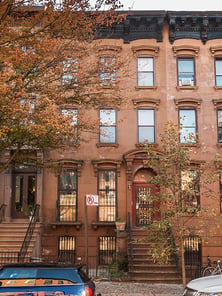
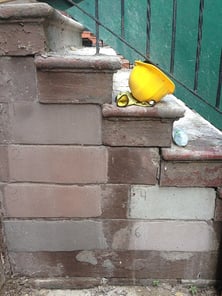
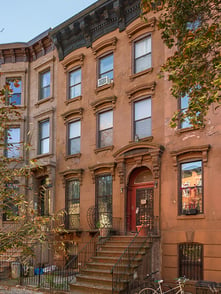
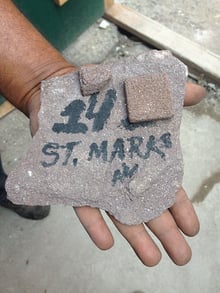
When describing the state of 142 St. Marks Avenue, an Anglo-Italianate brownstone in the Prospect Heights Historic District that's currently undergoing renovation, Wilton remarks, "Like most of the projects where we opt for the full brownstone renovation, it was in pretty disastrous shape. It had a faux façade, like a stone cladding. When you're at that level of decay, there's really no point in trying to patch it."
Keeping weather deadlines in mind, the team received Landmarks approval and color selection just in time, and the final brownstone layers were applied in late November. Stay tuned for the finished product: 142 St. Marks is expected to be ready for leasing in the summer of 2018.
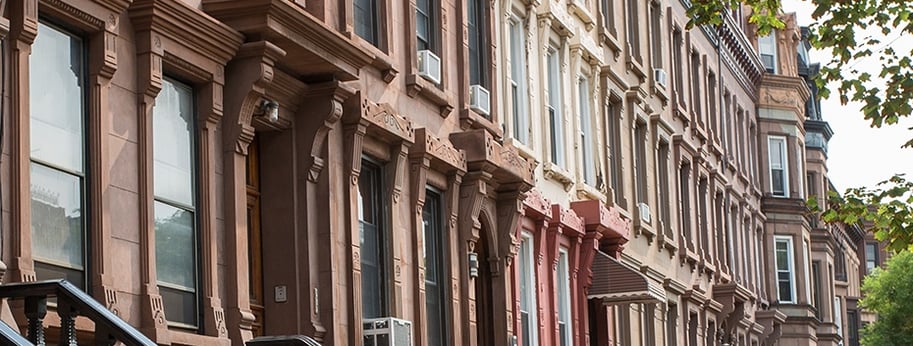
While historically accurate, well-executed brownstone restoration can be time consuming and expensive, the cost and care reap huge rewards especially when it comes to first impressions. "It gives such great curb appeal," says Sullivan. "It revitalizes the true significance of these homes and gives them that historic feel and pop from the street that people really like and have grown to expect."
 201 366 8692
201 366 8692






